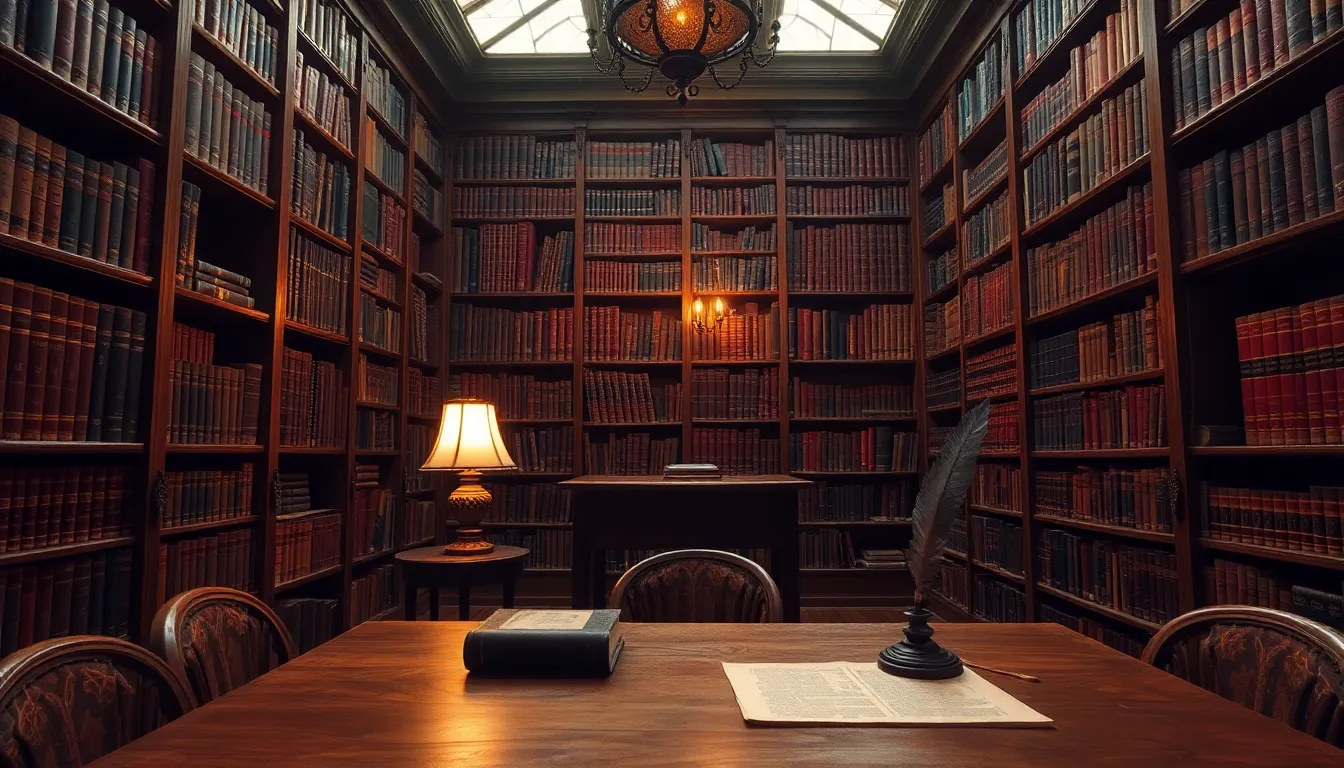Table of Contents
ToggleAllusion in literature is like a secret handshake among writers and readers. It’s that clever nod to a famous work, historical event, or cultural reference that makes you feel in-the-know. Imagine reading a novel and suddenly recognizing a sly reference to Shakespeare or a classic myth. It’s like finding the hidden Mickey in a Disney movie—satisfying and oh-so-rewarding!
Understanding Allusion in Literature
Allusion serves as a bridge between writers and readers, enriching texts with deeper meanings. This technique allows authors to draw on shared knowledge to create resonance.
Definition of Allusion
An allusion is an indirect reference to a person, place, event, or work. Writers use this device to evoke images or ideas without explicitly stating them. Literary allusions often posit connections between the text and elements, such as myths, biblical stories, or historical figures. For instance, mentioning “Achilles’ heel” invokes the Greek hero’s vulnerability, suggesting weakness or flaw without further detail.
Importance of Allusion in Literary Works
Allusion enhances a reader’s experience by creating layers of meaning. Recognizing references fosters a sense of intimacy between the author and the audience. Readers who grasp allusions feel a connection to the broader cultural context. This connection encourages engagement, prompting readers to explore themes and motifs throughout the work. Writers utilize allusions to convey complex ideas succinctly, packing significance into a few words.
Examples of Allusion in Classic Literature

Classic literature features numerous examples of allusion that enrich texts and engage readers.
Allusion in Shakespeare’s Works
Shakespeare’s plays are filled with allusions that reference historical figures, myths, and biblical stories. In “Julius Caesar,” he alludes to the fabled stature of Caesar’s ambition through the phrase “the ides of March.” This reference emphasizes the idea of fate and foreboding, encouraging readers to ponder the consequences of ambition. Another example can be found in “Hamlet,” where the character references Hercules, highlighting themes of strength and moral ambiguity. Each allusion invites audiences to explore deeper meanings and resonates with familiar cultural narratives.
Allusion in Homer’s Epics
Homer’s “Iliad” and “Odyssey” contain an array of allusions that enhance the narrative through connections to Greek mythology. In the “Odyssey,” Odysseus invokes the muse Calliope, immediately drawing attention to the epic tradition of storytelling. This reference links the story to a broader cultural history, enriching the reader’s understanding of literary heritage. Furthermore, the numerous references to gods such as Athena and Poseidon illustrate the influence of divine forces in human affairs, reinforcing the belief in fate and destiny. Through these allusions, Homer skillfully weaves complex themes into his narratives, creating layers of significance for his audience.
Examples of Allusion in Modern Literature
Allusion plays a significant role in modern literature, infusing texts with meaning through indirect references.
Allusion in Contemporary Novels
Contemporary novels often incorporate allusions to popular culture and historical figures, creating connections with readers. For instance, in “The Brief Wondrous Life of Oscar Wao” by Junot Díaz, references to the Dominican Republic’s political history illustrate themes of identity and exile. Similarly, in “The Road” by Cormac McCarthy, biblical allusions evoke images of salvation and sacrifice, enhancing the narrative’s depth. Such allusions invite readers to explore the underlying themes, enriching their understanding of characters and settings.
Allusion in Poetry
Poetry frequently utilizes allusion to evoke emotions and illustrate complex ideas succinctly. In “The Waste Land” by T.S. Eliot, numerous literary and cultural references, such as those to Dante’s “Divine Comedy,” create a tapestry of meaning that invites interpretation and reflection. Other poems, like “Lady Lazarus” by Sylvia Plath, reference biblical figures to underscore themes of resurrection and survival. These allusions spark connections between past and present experiences, allowing readers to engage with the poem’s emotional core effectively.
The Impact of Allusion on Readers
Allusion significantly impacts reader engagement and comprehension through its ability to create deeper connections within texts.
Enhancing Themes and Messages
Allusion enriches themes in literature by introducing additional layers of meaning. Writers use specific references to evoke complex ideas and emotions, which helps to reinforce the central message of their work. For example, Shakespeare’s frequent allusions to mythology and history highlight the timeless nature of human experiences, such as ambition and betrayal. Readers who recognize these references often gain insight into character motivations and overarching themes, which enhances their appreciation of the text’s depth. Effective allusions allow authors to convey powerful messages succinctly, inviting readers to reflect on the broader implications of the narrative.
Creating Connections to Cultural Context
Allusion also fosters connections to cultural context, enhancing the resonance of literary works. Writers reference shared knowledge, allowing readers to draw upon their understanding of historical events or cultural elements. This shared background strengthens the bond between the text and its audience, making the narrative more relatable and impactful. For instance, modern authors, like Junot Díaz, invoke specific aspects of cultural heritage, enabling readers to engage with the complexities of identity. The familiarity of these allusions encourages emotional responses and deeper contemplation, enriching the reader’s overall experience with the text.
Allusion remains a powerful tool in literature that enhances the reader’s journey through layers of meaning and cultural connections. By weaving references into their narratives, authors invite readers to engage more deeply with themes and motifs. This interplay fosters a sense of intimacy and shared understanding between the writer and the audience.
As seen in both classic and contemporary works, allusions enrich storytelling by drawing on collective knowledge. They prompt readers to explore complex ideas while evoking emotions and insights. Ultimately, the art of allusion not only adds depth to literature but also creates a dynamic reading experience that resonates across time and culture.







